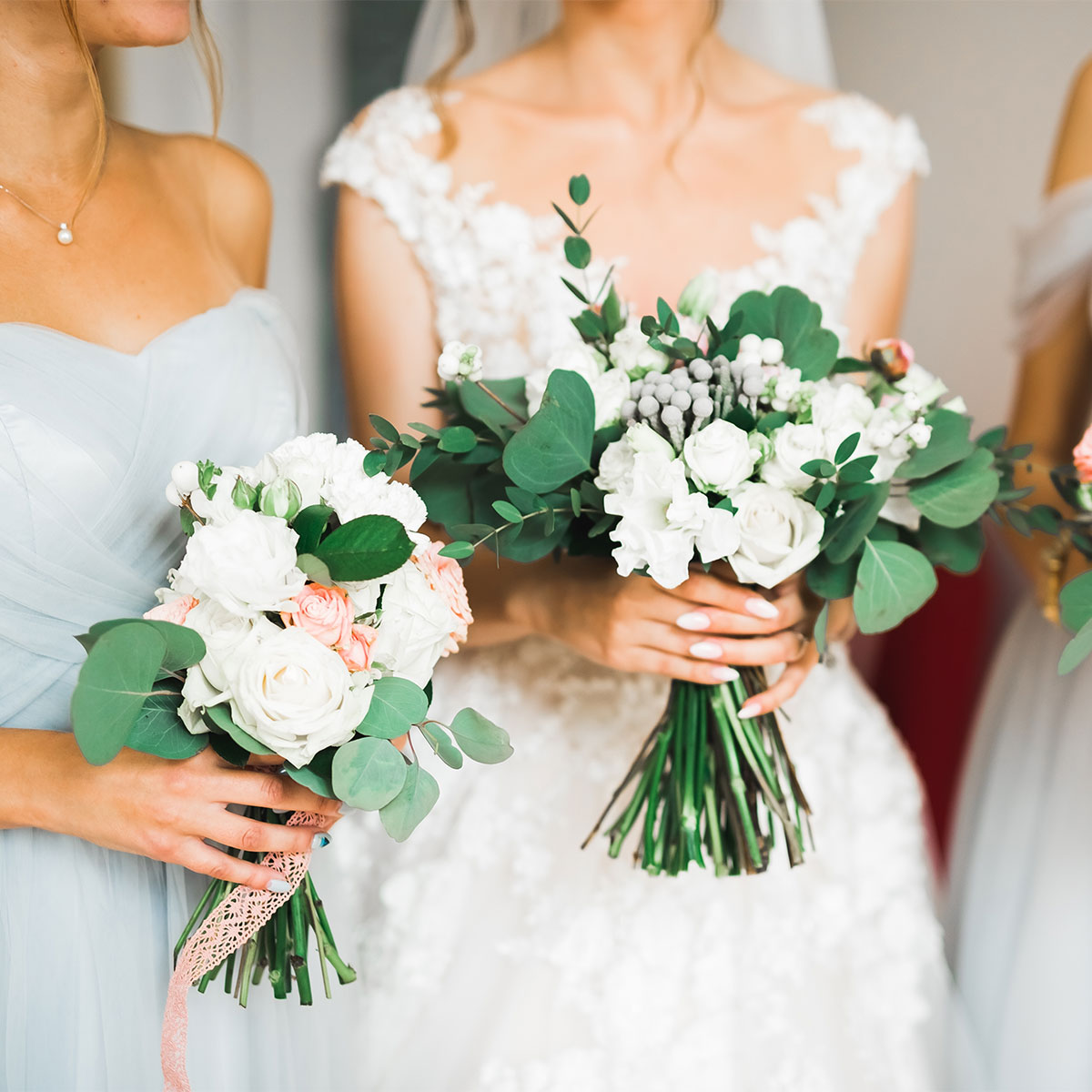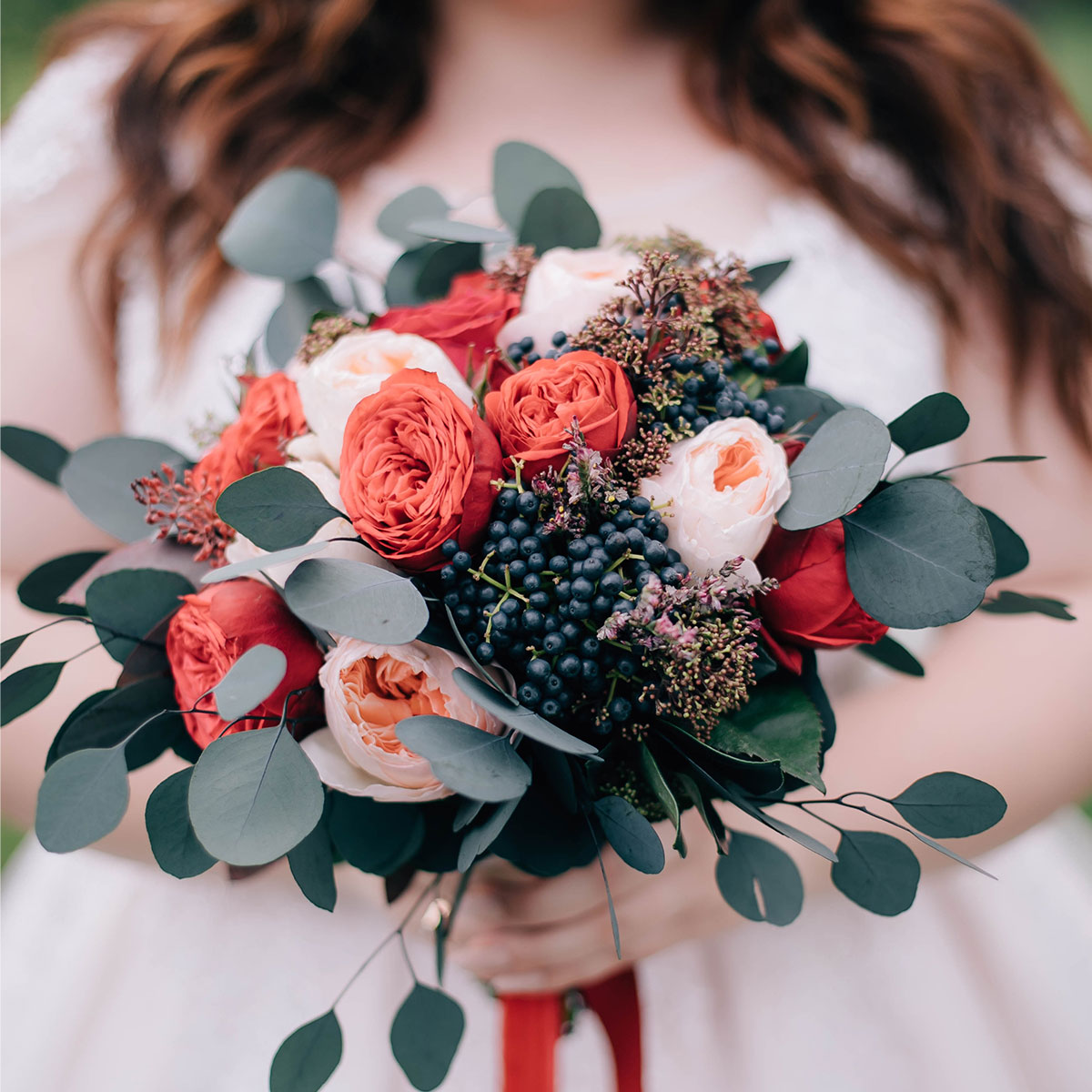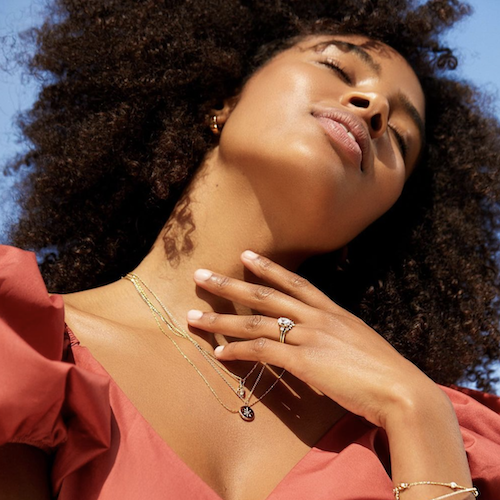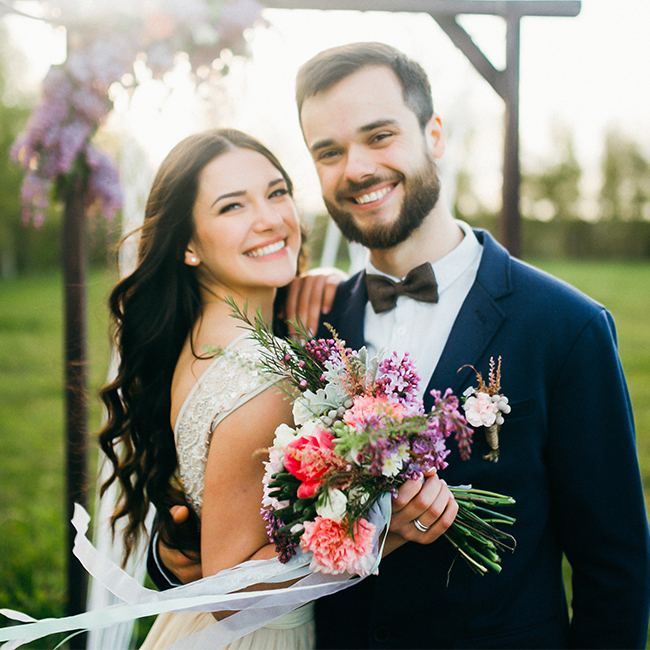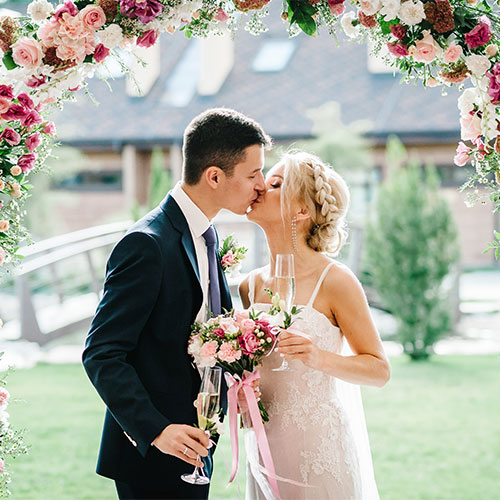This is an archived article and the information in the story may be outdated. Please check the time stamp on the story to see when it was updated last.

This month, we are rolling out our New Bride Guide, a series of posts written with you – the newly engaged bride – in mind. There are so many decisions to be made when planning a wedding that it’s helpful to have a guide for each step of the way. We’ll cover everything from where to start, who to invite, how to pick a venue, where to find your dream dress and more. Think of us as your personal wedding planner! If you liked 10 things to do as soon as you get engaged and 10 things never to do while wearing your ring, you’ll love the New Bride Guide.
Today we’re starting with the basics: terminology. It’s helpful to know some basic wedding terms before you start calling vendors. From the minute you get engaged it seems as if everyone around you is speaking a new language: will the invitations be letterpress or engraved? Will the reception be black tie or cocktail attire? Most important: will your cake be made from buttercream or fondant? Don’t worry, we have answers.
Aisle Runner: Usually a long white cloth that runs the length of the aisle. It is pulled out just before the bridal party enters.
A-Line: A dress silhouette that has a fitted bodice and slight flare starting around the waist, extending to the floor.
Anemones: A delicate spring flower known for its dark center. This perennial, which is also known as “windflower,” comes in a variety of colors (purple, red, pink or white).
Appliqué: Meaning “to put on” in French, this sewing technique involves decorating the surface of a fabric (wedding gown or otherwise) by applying pieces of cut fabric on top of it.
Ball Gown: A dress silhouette with a fitted bodice and full skirt. Appropriate for traditional or formal weddings. Also known as a “full skirt” wedding dress.
Basque: A waistline that dips below the natural waist forming a “V” above the pelvic.
Bateau: A neckline that follows the collarbone from shoulder to shoulder. Also known as a “Sabrina” neckline.
Batiste: A semi-transparent plain-woven fabric.
Black Tie: A formal dress code that calls for men to wear tuxedos or a formal, dark suit and women to wear evening gowns or long or formal dresses. Generally reserved for events after 6 o-clock in the evening.
Black Tie Optional: A dress code in which tuxedos and formalwear are suggested, not required.
Blusher: A short veil that covers the bride’s face as she enters the ceremony, and is . Also known as a “shoulder length veil.”
Birdcage: A veil that skims the face and head, never falling below the chin.
Boutonniere: Small floral arrangements — sometimes even just one flower — worn by men in the wedding party on their lapels.
Buffet: A dinner style in which guests serve themselves from a designated buffet area. Traditionally less expensive than a sit-down dinner served by waitstaff.
Bustier: A form-fitting undergarment which features boning or mesh panels and a bra top. A form of shapewear worn under the dress (or as lingerie), it pushes up the bust and shapes the waist. Shorter than a basque top.
Bustle: A system for shortening or holding up the train of a wedding dress; usually involving hooks, strings, snaps or buttons.
Buttercream: A common type of icing that is soft, creamy and sweet. It can be used to cover the outside of your cake or as a filling between layers.
Canapé: An open, bite-size appetizer served on a small round of bread, cracker or vegetable.
Candleabra: A branched candlestick with arms that can hold multiple candles.
Card Stock: Paper that is thicker than writing paper but thinner and more flexible than other forms of paperboard. Also, a term for describing the weight of a paper, typically 50-110 lb.
Cascading Bouquet: A bouquet in which flowers are arranged into a cascading, waterfall effect. When held it falls below the waist.
Cathedral Train: A dress train typically over 7 feet long from the waistline. Usually reserved for formal or traditional (religious) ceremonies.
Cathedral Veil: A dramatic veil length that extends to the floor, usually 120 inches long.
Chapel Train: A dress train typically 4 feet from the waistline. Ideal for a semi-formal wedding.
Chapel Veil: A veil that is slightly shorter then cathedral length and drapes on to the floor. Typically 90 inches long.
Charger: A decorative plate that rests under the dinner plate.
Chiffon: A lightweight, flowing sheer fabric of sheer silk or rayon.
Chuppah: A canopy under which a Jewish couple stand during their ceremony, stretched or supported over four poles. It can be made out of cloth or flowers.
Cocktail Attire: A dress code that is less formal than black tie, and calls for men to wear tailored suits and women to wear cocktail dresses.
Corkage Fee: A fee of roughly $5 to $10 per bottle that caterers charge just to open bottles during your reception if you provided them yourselves.
Creative Black Tie: A dress code calling for men to wear a tuxedo combined with a trendy or whimsical accessory (shirt, tie, socks, etc), usually related to the wedding’s theme.
Crepe: A lightweight fabric of silk, cotton, or wool with a crinkled surface. Also known as “crape.”
Crinoline: A coarse stiff fabric of cotton.
Crudités: An appetizer of raw vegetables such as carrots, celery and cucumbers, sliced and served with dip.
Dais: A platform for the head table.
Damask: An ornate pattern or medium-weight fabric. The flowery pattern is typically comes in black and white or gold.
Die Cut: A technique used for invitations to create a “window” for text or images.
Dinner Jacket: The jacket of a tuxedo. It is usually black or white, without tails and has a silk facing over the collar and lapels.
Dragee: Chocolate and candy-covered almonds that are often given as favors.
Drop Waist: A dress waistline that starts a few inches below the natural waist.
Duchess Satin: A fabric with a high thread count that has a shiny appearance on one side. Sometimes referred to as “silk satin.”
Embossing: A printing technique that creates raised surfaces in invitations. The process uses mated dies that press the paper into a shape that can be felt and seen on both the front and back sides.
English Garden: A full, colorful and generally informal flower arrangement. Silver containers or baskets are often used to arrange them.
Engraving: The most traditional form of invitation printing with slightly raised lettering and indentations that can be felt on the backside.
Escort Cards: Small cards that direct guests to their tables. Usually displayed near the entrance to the reception.
Family Style: A more relaxed style of serving dinner, food is passed on serving trays and guests help themselves as they would at a dinner table.
Fascinator: A small hat or decorative hair accessory popular in England, often featuring feathers, flowers, beads, netting or lace. Attached to a comb or hairclip and worn on the side of the head.
Filler: Inexpensive flowers and foliage like baby’s breath used to fill out bouquets and other arrangements.
Fingertip Length Veil: The length of the veil extends to the bride’s fingertips when her arms are at her sides – roughly 32 inches.
Floor Length Veil: Also known as ballet length, these veils just brush the floor and are roughly 72 inches long.
Fondant: A firm icing made of sugar, gelatin, corn syrup and glycerin that has a smooth finish. More expensive than buttercream.
Foundation: A shaping undergarment such as a corset or girdle.
Ganache: A chocolate and creme icing used to cover, decorate or fill cakes.
Groom’s cake: A cake specifically for the groom, often chocolate, and frequently served as dessert at the rehearsal dinner.
Grosgrain: A silk or silk-like fabric with a ribbed appearance. Commonly used for ribbon.
Handle Wrap: The ribbon or fabric that wraps around the stems of a bouquet.
Horah: Traditional Jewish wedding dance in which the bride and groom are lifted up on chairs as guests dance in circle to the “Hava Nagila.”
Illusion Neckline: A transparent panel that extends from the bust to the collar of a dress. Often made from tulle, net, or lace.
Ketubah: Jewish wedding contract usually signed during a short ceremony before the actual wedding ceremony.
Knee Length Veils: At approximately 45 inches long, these veils are meant to reach the knees. Best paired with a mid-calf length wedding dresses.
Letterpress: A printing technique where blocks or plates of raised type are inked and pressed deep into the paper, giving words a grooved texture.
Mantella Veil: A Spanish-style veil with a wide lace border that lays over the head.
Mercury Glass: The term for silvered glass, which is glass that was blown double walled, then silvered between the layers with a liquid silvering solution and sealed.
Mermaid: A dress silhouette that is fitted through the body and hips and flares out below the knees. It is also known as “trumpet.”
Morning Coat: Part of the daytime formal dress code. It is full-dress jacket with two long tapering tails at the back.
Nosegay: A small bouquet usually given as a gift to the mothers of the bride and groom.
Officiant: The person who performs the marriage ceremony. The term “officiant” includes Justices of the Peace, celebrants, marriage commissioners, ministers, notaries, and others empowered by law to perform legally binding private ceremonies.
Organza: Thin and sheer fabric usually made from silk.
Overlay: Decorative cloth on top of the underlay used for contrast in color or texture. It extends halfway down the sides of the table.
Palette: The range of colors used in the wedding decor. Usually two or three colors.
Place Cards: Designatesa guest’s seat at a table.
Pomander: A ball of flowers suspended from a ribbon handle. Can be carried by a flower girl or used as decor.
Prelude: Background music played at the beginning of the ceremony as guests arrive.
Processional: Music played as the bridal party and bride walk down the aisle.
Raised Tiers: Small columns used to elevate layers of a wedding cake to make it look larger.
Receiving Line: The couple, and often the wedding party, their parents, and any other attendants, greet every guest as they leave the ceremony and make their way to the reception.
Recessional: Upbeat music played at the end of the service as the bride and groom exit the ceremony.
Reply Card: A card with the invitation that guests return to indicate whether or not they will be attending and how many people will be in attendance.
Royal Icing: Hard white icing made from egg whites, powdered sugar, and sometimes lemon or lime juice. Its use is mainly decorative.
Ruched: Fabric that is gathered into ruffles or pleats.
Save-The-Dates: Announcements sent out usually six months before the wedding to alert guests to keep the wedding date free.
Sheath: A dress style that features a narrow, straight silhouette style. Also referred to as a “column dress.”
Sheet Cake: Cake served to guests in lieu of the wedding cake, which may not be large enough to serve to everyone.
Silk shantung: A heavy fabric that is often made with either silk fibers or other synthetic fibers. Sometimes referred to as “spun wild silk.” It is somewhat rough but not unpleasant to the touch.
Signature Cocktail: A specialty cocktail chosen by the bride and groom specifically for the wedding.
Stationery Suite: Describes all of the stationery including save-the-dates, invitations, reply and reception cards.
Succulents: Plants such as aloe, agave and echeveria that are popular in bouquets and can be used year round.
Swagging: Two tablecloths are layered, and the top one is gathered and draped into soft arcs.
Sweetheart Neckline: A dress neckline that is shaped like a heart.
Sweetheart Table: A two-person table for the bride and groom.
Table Cakes: A cake that is used as a substitute for other kinds of centerpieces and also serves as dessert.
Tablecards: Sign at the center of each table so guests can find their place.
Tablescape: The layout of table including place settings, glasses and centerpieces.
Taffeta: Crisp, smooth fabric often made from silk or synthetic fibers.
Tea Light: A candle in a thin metal cup so that the candle can liquefy completely while lit. They are typically small and inexpensive. Multiple tea lights are often burned simultaneously.
Thermography: A process that uses heated powder to give print a raised look. It looks like engraved print but costs less.
Tossing Bouquet: A bouquet for the bouquet toss at the reception.
Trumpet: A dress silhouette that is fitted through the body and hips and flares out below the knees. It is also known as “mermaid.”
Tulle: A fine netted fabric used for veils or gowns, also commonly used for tutus.
Tussy Mussy: A cone-shaped, metallic bouquet holder that was popular during the Victorian era. Currently they are often used as decor in vintage-themed weddings.
Trunk Show: A special sale where vendors offer merchandise directly to store personnel or select customers. It often allows buyers to preview or purchase merchandise before it is available to the public.
Underlay: A full tablecloth that falls to the floor.
Unity Candle: The unity candle ceremony uses two taper candles and a large pillar candle, called the “unity candle”, in the center. At the beginning of the ceremony, a representative from each family, usually the mothers of the bride and groom, light the two taper candles. Later in the ceremony, usually after the vows, the bride and groom use the two taper candles to light the unity candle together.
Ushers: Men selected by the groom who seat guests as they enter the ceremony. They are generally family members or close friends.
Vellum: Heavy, transparent paper that is often used as an overlay on wedding invitations.
Votives: A standard size of a candle two inches high by one and a half inches diameter.
White Tie: The most formal evening dress code in which men wear a black dress coat, commonly known as an evening tailcoat, white bow tie, white waistcoat and starched winged collar shirt. Women wear evening gowns.
In the middle of wedding planning? Get inspired with Vogue’s wedding book, 13 wedding trends for 2013 and Monique Lhuillier x Blue Nile engagement rings.




